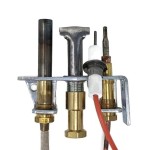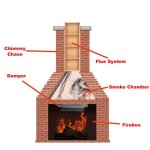Cleaning a Brick Fireplace with Dish Soap: A Comprehensive Guide
A brick fireplace, a focal point in many homes, adds warmth and character to any living space. However, the constant exposure to smoke, soot, and ash can leave the brick looking dull and stained. While specialized cleaning products exist, a simple and effective method for cleaning a brick fireplace involves the use of common dish soap. This article will provide a detailed guide on how to clean a brick fireplace using dish soap, outlining the necessary materials, step-by-step instructions, and important precautions to ensure a clean and well-maintained fireplace.
The accumulation of soot and creosote on brick surfaces not only detracts from the fireplace's aesthetic appeal, but can also contribute to potential fire hazards. Creosote, a byproduct of burning wood, is highly flammable and can build up in the chimney and on the fireplace walls. Regular cleaning helps to remove this buildup, preventing chimney fires and ensuring the safe operation of the fireplace. Using dish soap offers a gentle yet effective cleaning solution that minimizes the risk of damage to the brick while effectively removing soot and grime.
Before beginning the cleaning process, it is crucial to gather the necessary materials and prepare the area. This preparation will ensure a smooth and efficient cleaning process, minimizing the risk of messes and maximizing the effectiveness of the cleaning solution.
Essential Materials for Cleaning a Brick Fireplace
To effectively clean a brick fireplace with dish soap, the following materials are essential:
Dish Soap: Choose a mild, grease-cutting dish soap. Harsh chemicals can damage the brick and mortar, so a gentle formula is preferable. Avoid dish soaps containing bleach or abrasive additives.
Water: Use warm water to create the cleaning solution. Warm water helps to loosen dirt and soot more effectively than cold water.
Spray Bottle: A spray bottle allows for easy and even application of the cleaning solution to the brick surface.
Buckets: Two buckets are needed: one for the cleaning solution and one for rinsing.
Scrub Brush: A stiff-bristled scrub brush is essential for removing stubborn soot and grime from the brick. Choose a brush with durable bristles that can withstand vigorous scrubbing without damaging the brick.
Sponges: Sponges are useful for wiping down the brick surface and absorbing excess water.
Drop Cloths or Plastic Sheeting: Protect the surrounding floor and furniture from water and cleaning solution by covering them with drop cloths or plastic sheeting.
Protective Gloves: Gloves protect hands from the cleaning solution and potential irritants.
Eye Protection: Safety glasses or goggles protect eyes from splashes of cleaning solution and debris.
Old Towels or Rags: These are needed for drying the brick after cleaning.
Vacuum Cleaner with Brush Attachment: A vacuum cleaner helps to remove loose debris and ash from the fireplace before cleaning.
Once all the necessary materials are gathered, the next step involves preparing the fireplace and surrounding area for cleaning.
Step-by-Step Cleaning Process
Follow these steps to effectively clean a brick fireplace using dish soap:
Step 1: Prepare the Area: Begin by placing drop cloths or plastic sheeting on the floor around the fireplace to protect it from water and cleaning solution. Remove any furniture or decorative items that might be in the way. Open windows or doors to ensure adequate ventilation.
Step 2: Remove Loose Debris: Use a vacuum cleaner with a brush attachment to remove loose ash, soot, and debris from the fireplace walls, hearth, and firebox. This step will prevent the dirt from being spread around during the cleaning process.
Step 3: Prepare the Cleaning Solution: In a bucket, mix warm water with a generous amount of dish soap. The exact ratio will depend on the concentration of the dish soap, but a good starting point is about 1/4 cup of dish soap per gallon of water. Stir the mixture well to create a sudsy solution.
Step 4: Apply the Cleaning Solution: Pour the cleaning solution into a spray bottle. Spray the solution evenly over the brick surface, focusing on areas with heavy soot buildup. Allow the solution to sit for 5-10 minutes to loosen the dirt and grime.
Step 5: Scrub the Brick: Using a stiff-bristled scrub brush, scrub the brick surface thoroughly. Apply firm pressure to remove stubborn soot and stains. Work in small sections, rinsing the brush frequently in the bucket of clean water to remove dirt and grime.
Step 6: Rinse the Brick: After scrubbing, rinse the brick surface thoroughly with clean water. Use a sponge or damp cloth to wipe away any remaining soap residue. Ensure that all traces of soap are removed to prevent streaking and discoloration.
Step 7: Dry the Brick: Use old towels or rags to dry the brick surface. Press the towels firmly against the brick to absorb as much water as possible. Allow the brick to air dry completely before using the fireplace.
Step 8: Inspect and Repeat: Once the brick is dry, inspect it for any remaining stains or soot. If necessary, repeat the cleaning process to remove any stubborn areas. For particularly difficult stains, consider using a specialized brick cleaner, but always test it in an inconspicuous area first to ensure it doesn't damage the brick.
By following these steps, the brick fireplace can be effectively cleaned using dish soap, restoring its appearance and ensuring its safe operation.
Important Precautions and Considerations
While cleaning a brick fireplace with dish soap is a relatively straightforward process, it is crucial to take certain precautions and consider the following factors to ensure a safe and effective cleaning experience:
Test in an Inconspicuous Area: Before applying the cleaning solution to the entire fireplace, test it in a small, inconspicuous area to ensure it doesn't damage or discolor the brick. This is particularly important for older or more delicate brick surfaces.
Protect Mortar Joints: Mortar joints can be more susceptible to damage than the brick itself. Avoid excessive scrubbing or the use of harsh chemicals on the mortar joints. If the mortar is crumbling or damaged, consider re-pointing it before cleaning.
Avoid Abrasive Cleaners: Abrasive cleaners can scratch and damage the brick surface. Stick to mild dish soap and avoid using scouring pads or harsh chemicals.
Don't Over-Saturate the Brick: Avoid over-saturating the brick with water, as this can lead to moisture damage and efflorescence (a white, powdery deposit on the brick surface). Use a sponge or damp cloth to control the amount of water used during rinsing.
Proper Ventilation: Ensure adequate ventilation during the cleaning process to prevent the buildup of fumes and moisture. Open windows and doors or use a fan to circulate air.
Allow Adequate Drying Time: Allow the brick to dry completely before using the fireplace. This will prevent moisture damage and ensure that the fireplace operates safely.
Regular Cleaning: Regular cleaning is essential for maintaining the appearance and functionality of the brick fireplace. Clean the fireplace at least once a year, or more frequently if it is used regularly.
Professional Cleaning: For heavily soiled or stained brick fireplaces, consider hiring a professional cleaning service. Professionals have the expertise and equipment to safely and effectively clean brick surfaces without causing damage.
By adhering to these precautions and considerations, one can safely and effectively clean a brick fireplace with dish soap, maintaining its beauty and ensuring its continued functionality for years to come.
In addition to the general cleaning process, specific types of stains may require additional attention. For example, soot stains can be particularly stubborn and may require multiple applications of the cleaning solution and more vigorous scrubbing. Grease stains, often caused by cooking near the fireplace, can be more easily removed with a degreasing dish soap. Always address stains promptly to prevent them from setting in and becoming more difficult to remove.
Furthermore, consider the impact of environmental factors on the fireplace's condition. Homes located in areas with high humidity or exposure to salt air may experience more rapid deterioration of the brick and mortar. Regular inspections and preventative maintenance can help to mitigate these effects and prolong the lifespan of the fireplace.
Finally, remember that safety is paramount when cleaning a fireplace. Always wear appropriate protective gear, such as gloves and eye protection, and ensure that the fireplace is completely cool before beginning the cleaning process. By following these guidelines, one can maintain a clean, beautiful, and safe brick fireplace for years to come.

How To Clean Fireplace Bricks 9 Steps With S Wikihow

How To White Wash Your Brick Fireplace Living On Lee

How To Clean Brick The Home Depot

How To Clean Brick Fireplaces Mantels Hearths And More My Space

How To Clean A Sooty Fireplace With Household Items

How To Clean Brick The Home Depot

How To Clean Brick The Home Depot

How To Clean Fireplace Bricks Cleanup Team

How To Clean A Brick Fireplace The Family Handyman

Clean Your Fireplace Brick With Common Household Items You May Already Have On Hand
Related Posts








